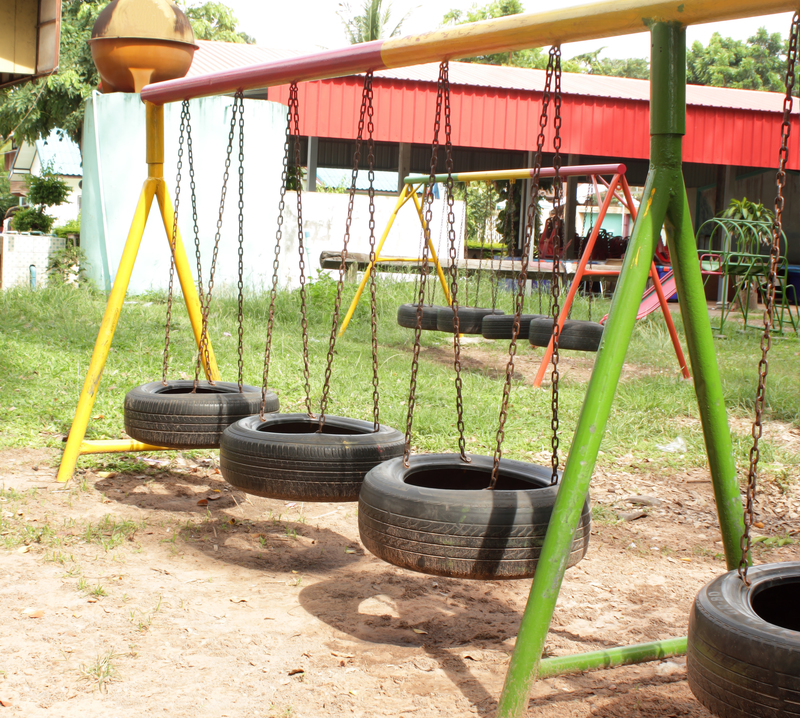A Greener Office: Key Steps to Cut Waste
Concerned about environmental sustainability in the workplace? Today's forward-thinking companies are moving toward greener practices and aiming to achieve a zero-waste office. Transforming your office into an eco-friendly environment isn't just good for the planet--it's also great for cost savings, employee morale, and your corporate image. In this comprehensive article, we'll break down the most effective steps you can take to cut waste, reduce your carbon footprint, and promote a sustainability-driven company culture.
Why Reducing Office Waste Matters
According to the Environmental Protection Agency (EPA), the average office worker generates about two pounds of paper and paperboard products every day. Multiply that by dozens--or even hundreds--of employees, and the environmental cost adds up quickly. Cutting down on waste at work isn't just a trend; it's a critical strategy for conserving resources, combating climate change, and setting your organization apart as a responsible leader.
The Business Benefits of a Waste-Reduced, Eco-Friendly Office
- Cost savings: Efficient use of supplies and utilities directly reduces expenses.
- Brand reputation: Green credentials can attract customers, partners, and potential hires.
- Employee engagement: Sustainable practices make staff feel motivated and proud of their workplace.
- Regulatory compliance: Stay ahead of future environmental laws and standards.

Key Steps to Create a Greener Office and Cut Waste
Ready to commit to a greener, less wasteful office? Here are the proven actions every workplace should consider for maximum impact:
1. Conduct a Waste Audit
Before making changes, understand what you're throwing away. Perform a comprehensive waste audit to categorize, measure, and analyze the types and quantities of waste your office generates. This will help identify opportunities for reduction and track your progress over time.
- Review waste bins daily or weekly.
- Note the proportion of paper, plastic, food, and e-waste.
- Engage employees in the audit process for better accuracy.
2. Minimize Paper Consumption
Office paper is a major contributor to workplace waste. Take action to cut down unnecessary usage:
- Go digital: Use cloud storage, digital signatures, and online collaboration tools instead of paper files.
- Print smarter: Set up double-sided printing as the default. Print only what is absolutely necessary.
- Reuse scrap paper: Designate a tray for single-sided printouts to be reused as notepads.
- Distribute memos electronically: Replace traditional bulletin boards with digital display screens.
3. Switch to Sustainable Office Supplies
Review your office supply purchases and seek sustainable, recycled, or refillable alternatives. Eco-friendly workplace products include:
- Recycled paper and notebooks
- Refillable pens and markers
- Bamboo or compostable utensils
- Non-toxic cleaning products
- Energy-efficient electronics
Partner with suppliers committed to green practices and request bulk shipments to minimize packaging waste.
4. Implement a Robust Recycling Program
Make recycling easy and visible throughout the workspace:
- Place clearly labeled recycling bins for paper, plastics, glass, and e-waste in accessible areas.
- Educate staff about what can and cannot be recycled--post signs as reminders!
- Appoint a "green team" to oversee recycling efforts and track improvements.
- Host periodic recycling drives for electronics, batteries, and other hazardous materials.
Successful recycling depends on consistency and employee buy-in. Offer incentives to departments that excel at recycling correctly and consistently.
5. Reduce Single-Use Plastics
Plastic waste is a major environmental issue in offices. To create a greener office space:
- Replace bottled water with filtered water dispensers and encourage the use of reusable water bottles.
- Provide staff with branded or communal reusable mugs, plates, and cutlery.
- Eliminate plastic bags in office kitchens; switch to reusable shopping bags for deliveries or groceries.
Communicate clearly why these changes are necessary--education is key to long-term plastic reduction.
6. Promote Composting in Office Kitchens
Food scraps shouldn't end up in landfill. Set up composting bins in lunchrooms and kitchens for organic waste like fruit peels, coffee grounds, and tea bags. If your building doesn't offer composting, research local collection programs or start a partnership with a commercial composter.
- Label compost bins with accepted items.
- Educate employees via workshops or newsletters on composting techniques and benefits.
7. Cut Down on Energy Waste
Energy efficiency is a key part of creating an environmentally friendly workplace. Steps to save power:
- Replace traditional light bulbs with LEDs.
- Install motion sensor lighting in less-frequented areas.
- Encourage employees to shut down computers and unplug chargers before leaving.
- Upgrade to energy-efficient appliances and HVAC systems.
- Promote remote work and telecommuting to reduce commuting emissions.
Monitoring your energy usage with smart meters provides valuable data to help optimize further savings.
8. Donate or Recycle Old Electronics
Electronic waste is a rapidly growing problem worldwide. Instead of disposing unused electronics:
- Establish an annual technology clean-out to collect old computers, printers, and peripherals.
- Donate functional equipment to schools, charities, or community organizations.
- Safely recycle unrepairable items with certified e-waste recyclers.
This not only diverts waste from landfill but can make a positive impact in your local community.
Building a Green Office Culture
True sustainability requires employee engagement. Here are proven ways to embed a waste-reducing ethic into your company culture:
Lead by Example
Management should consistently demonstrate sustainable habits, from minimizing paper usage to turning off lights. When leadership is visibly invested in greener office practices, employees are more likely to follow suit.
Green Office Challenges and Incentives
- Launch friendly competitions, such as "who can reduce printing the most?" or "which team can recycle the most?"
- Reward winners with eco-friendly prizes, recognition, or extra time off.
Ongoing Education and Communication
- Host lunch-and-learn sessions with local green experts.
- Share regular updates on your sustainability metrics in company meetings and emails.
- Encourage feedback and suggestions from all employees.
Visibility and communication are crucial to keeping sustainability top of mind for the entire team.
Additional Strategies for an Environmentally Friendly Workplace
Flexible Work Options and Commuting Solutions
- Embrace remote work policies and flexible scheduling to decrease transportation emissions.
- Provide secure bike parking and promote cycling or walking to work.
- Offer transit passes or incentives for public transport users.
Green Purchasing Policies
Procure office goods and services with sustainability in mind:
- Select suppliers with minimal packaging and carbon-neutral shipping.
- Buy durable goods built to last, reducing the need for frequent replacements.
- Favor companies with environmental certifications such as Energy Star, Forest Stewardship Council (FSC), or eco-labels.
Measuring Success: Tracking Your Waste Reduction Efforts
How do you know your waste-cutting initiatives are paying off? Establish clear metrics to track improvements:
- Monitor waste and recycling volumes monthly or quarterly.
- Track supply purchases before and after implementing new policies.
- Calculate reductions in electricity, water, and disposable materials.
- Survey staff for their perceptions and suggestions for further improvement.
Share your achievements widely--success in office sustainability is worth celebrating both internally and externally.
Case Study: Companies Leading the Way Toward a Greener Office
Many top-performing companies are setting benchmarks for waste-free office initiatives. For example, Google and Microsoft have invested heavily in energy-efficient office designs, zero-waste cafeterias, and robust recycling programs, while smaller firms such as Bulldog Skincare use only recycled packaging for their products and offices. These efforts not only decrease waste but also serve as a model for other businesses looking to go green.
Lessons Learned From Sustainability Leaders
- The most effective changes happen when all staff are involved.
- Setting ambitious targets--such as becoming carbon-neutral or zero waste--drives innovation.
- Sharing results and celebrating milestones motivates continued progress.

FAQ: Greener Offices and Waste Reduction
- Q: How do I start a green team in my office?
A: Recruit volunteers from different departments, set clear goals, and meet regularly to brainstorm and implement initiatives. - Q: What are the easiest steps for a small office to reduce waste?
A: Start with digital documents, recycling bins, and reusable kitchenware. Small changes add up fast! - Q: Can cutting waste really save money?
A: Absolutely! From reducing supply orders to lowering heating and cooling costs, many businesses see significant savings each year.
Conclusion: Start Your Journey to a Greener Office Today
Transitioning toward a sustainable, waste-minimized office environment is not just environmentally responsible, but also smart business. By following the key steps outlined above, you can position your company as an industry leader, improve employee satisfaction, and make a meaningful difference for the planet. Every effort counts--so why not begin your green office transformation today? Whether you're a small team or a large corporation, a greener workplace is within reach.
Remember: Sustainable change is ongoing. Re-evaluate your green policies often, celebrate your successes, and encourage everyone in your office to get involved. Together, we can create a brighter, greener future--one office at a time.